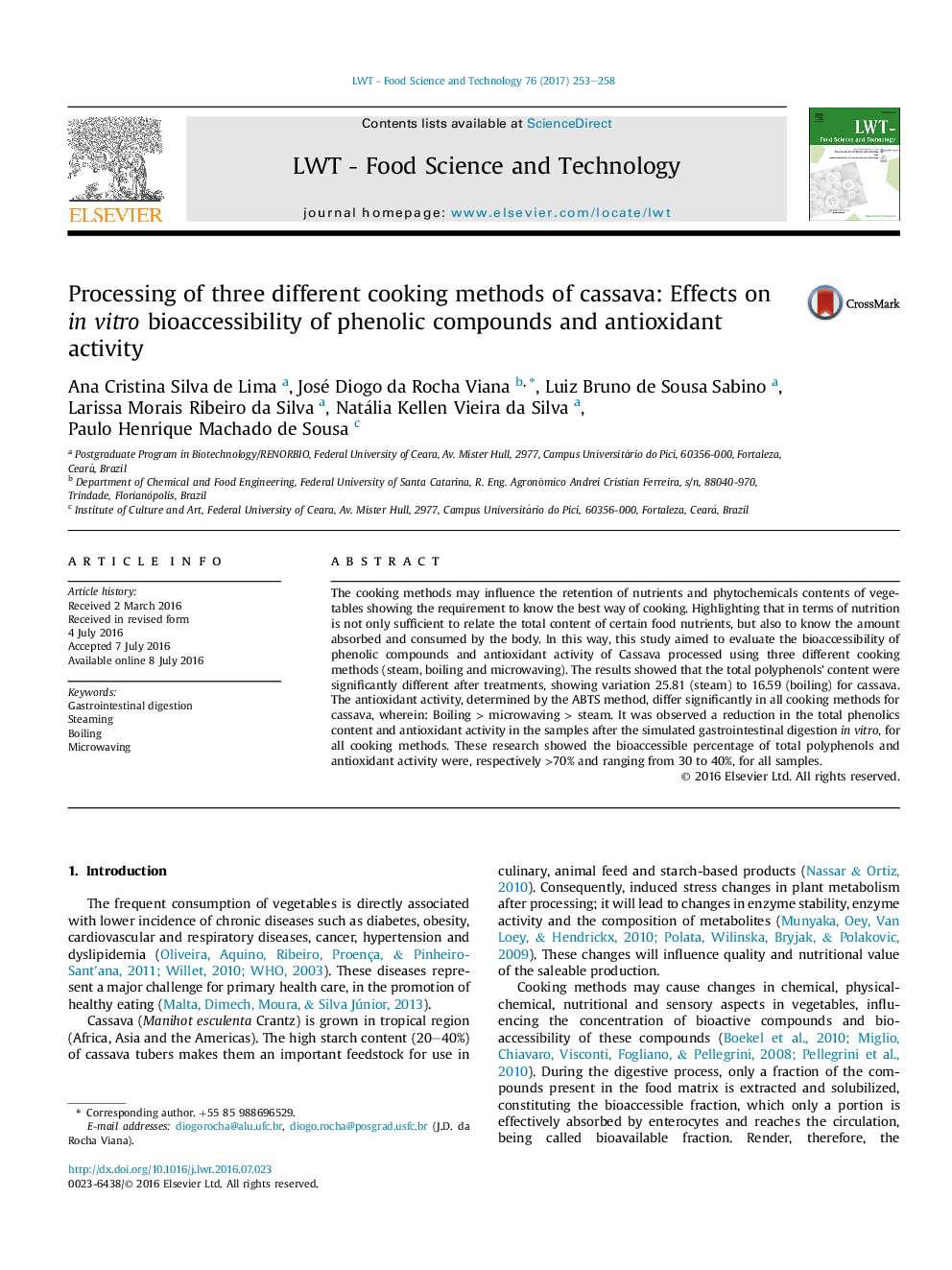| Article ID | Journal | Published Year | Pages | File Type |
|---|---|---|---|---|
| 5769117 | LWT - Food Science and Technology | 2017 | 6 Pages |
â¢Phenolics bioaccessibility in the cassava was influenced by the cooking method used.â¢Steam is the indicated method indicated due the high retention of phenolics.â¢After simulated digestion cassava showed lower antioxidant activity.â¢Phenolics bioaccessibility content increased after the simulated digestion.
The cooking methods may influence the retention of nutrients and phytochemicals contents of vegetables showing the requirement to know the best way of cooking. Highlighting that in terms of nutrition is not only sufficient to relate the total content of certain food nutrients, but also to know the amount absorbed and consumed by the body. In this way, this study aimed to evaluate the bioaccessibility of phenolic compounds and antioxidant activity of Cassava processed using three different cooking methods (steam, boiling and microwaving). The results showed that the total polyphenols' content were significantly different after treatments, showing variation 25.81 (steam) to 16.59 (boiling) for cassava. The antioxidant activity, determined by the ABTS method, differ significantly in all cooking methods for cassava, wherein: Boiling > microwaving > steam. It was observed a reduction in the total phenolics content and antioxidant activity in the samples after the simulated gastrointestinal digestion in vitro, for all cooking methods. These research showed the bioaccessible percentage of total polyphenols and antioxidant activity were, respectively >70% and ranging from 30 to 40%, for all samples.
